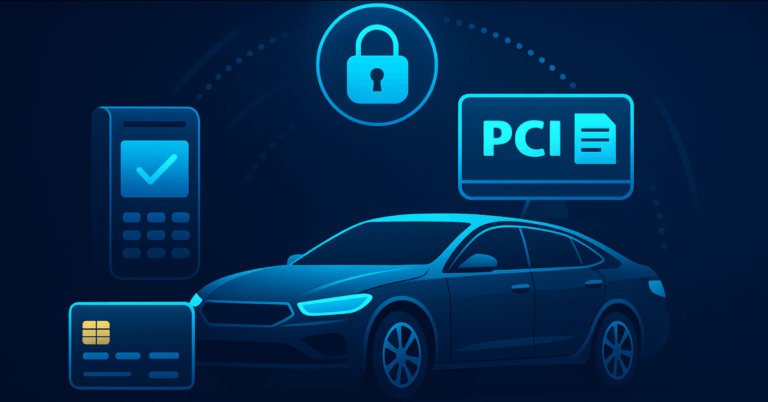Top 5 API Security Risks Most Scanners Miss and How to Fix Them Before Attackers Find Them

APIs are the backbone of modern digital businesses. They connect applications, power mobile experiences, and enable critical partnerships at scale. Unfortunately, they are also a prime target for cyber attackers, and many organizations mistakenly assume that a basic vulnerability scan is enough to keep them secure.
As an Approved Scanning Vendor (ASV) and Managed Security Service Provider (MSSP), we assess and protect thousands of APIs each year. Our experience shows that while automated scanning is essential, many serious API vulnerabilities require expert testing and contextual analysis to detect and remediate effectively.
This article explains the top five API security risks that often go unnoticed by standard scans, why they matter, and how organizations can address them proactively.
1. Broken Authentication and Authorization
APIs typically rely on tokens or session IDs to authenticate users. If these controls are not implemented properly, attackers can impersonate other users, escalate privileges, or gain unauthorized access to sensitive data.
Example:
During a recent engagement, our team discovered an API that allowed any authenticated user to modify a request URL and access another customer’s records. This vulnerability resulted from missing authorization checks on specific endpoints.
Why standard scans miss this:
Automated tools verify whether authentication mechanisms exist but cannot always confirm whether authorization checks are consistently enforced across all endpoints.
How to address it:
Validate tokens for every request
Implement strict role-based access controls
Regularly perform penetration tests focusing on broken object-level access control, which remains a leading API security risk according to OWASP
2. Excessive Data Exposure
Many APIs return more information than is necessary, exposing internal data structures or sensitive fields that attackers can exploit.
Example:
In one mobile application, the backend API returned full user profiles, including email addresses and hashed passwords, even though the front-end only displayed the username.
Why standard scans miss this:
Scanners check for known vulnerabilities but do not evaluate whether returned data aligns with business requirements.
How to address it:
Ensure APIs return only the minimum data required for functionality
Implement server-side output filtering
Review API responses regularly to detect unintended data exposure
3. Lack of Rate Limiting
Without proper rate limiting, APIs are vulnerable to brute-force attacks, credential stuffing, data scraping, and denial-of-service incidents.
Example:
A client’s login API did not have any rate limiting controls, which allowed attackers to attempt thousands of password guesses per minute. Our team identified this gap and helped the client implement appropriate throttling measures before any damage occurred.
Why standard scans miss this:
Most scanners do not simulate high-volume brute-force or scraping attempts, but attackers frequently exploit this weakness.
How to address it:
Implement rate limiting and request throttling for each user or IP address
Use API gateways that provide built-in rate limiting features
Monitor for unusual spikes in API requests
4. Shadow and Zombie APIs
Organizations often deploy APIs for testing, pilot projects, or legacy applications and forget to decommission them. These overlooked or abandoned APIs typically lack security controls and become easy targets for attackers.
Example:
In one assessment, we discovered a test API still active in production. It bypassed key security checks and exposed customer data because no one disabled it after the project concluded.
Why standard scans miss this:
Scanners can only check known endpoints. If an API is undocumented or misconfigured, it often remains invisible to traditional scanning tools.
How to address it:
Maintain an up-to-date inventory of all active APIs
Use automated discovery tools to detect unknown endpoints
Include shadow API detection in penetration testing engagements
5. Insufficient Logging and Monitoring
Even well-secured APIs can become compromised if organizations lack visibility into suspicious or malicious activity. Without robust logging and monitoring, breaches may go undetected for extended periods.
Example:
A retailer’s API leaked loyalty program data for months because there was no system in place to monitor unusual queries or repeated failed requests.
Why standard scans miss this:
Vulnerability scans assess security controls but do not evaluate the maturity of an organization’s monitoring and incident detection capabilities.
How to address it:
Log all API requests, authentication failures, and error responses
Establish real-time alerting for abnormal usage patterns
Engage an MSSP to provide continuous monitoring and rapid incident response
Why Automated Scanning Alone Is Not Enough
Vulnerability scanning remains an essential part of any security program, helping organizations identify configuration issues and known exploits. However, APIs present unique risks that often require manual testing and an understanding of business logic to uncover.
Penetration testing using both black box (external perspective) and white box (insider perspective) approaches is the most effective method to identify complex flaws, chained vulnerabilities, and realistic attack paths. Combining this with continuous monitoring ensures your APIs remain secure even as your environment evolves.
A Practical API Security Checklist
Organizations can strengthen their API security posture immediately by following these best practices:
-Maintain a complete, current inventory of all APIs
-Enforce strong authentication and granular authorization checks
-Limit the data returned by APIs to what is strictly necessary
-Implement robust rate limiting and throttling
-Log and monitor all API activity continuously
-Schedule regular API penetration tests and update security controls based on the findings
Enhance Your API Security with Expert Support
APIs are critical to modern operations but can pose significant security risks if left unchecked. Relying on basic scans alone is not enough. Combining automated scanning with expert-driven testing and continuous monitoring provides the comprehensive protection needed to stay ahead of evolving threats.
If you would like to understand your API risk profile or schedule a targeted API security assessment, our team is ready to assist.
Contact us today to learn more about our advanced vulnerability scanning, API penetration testing, and managed security services.






